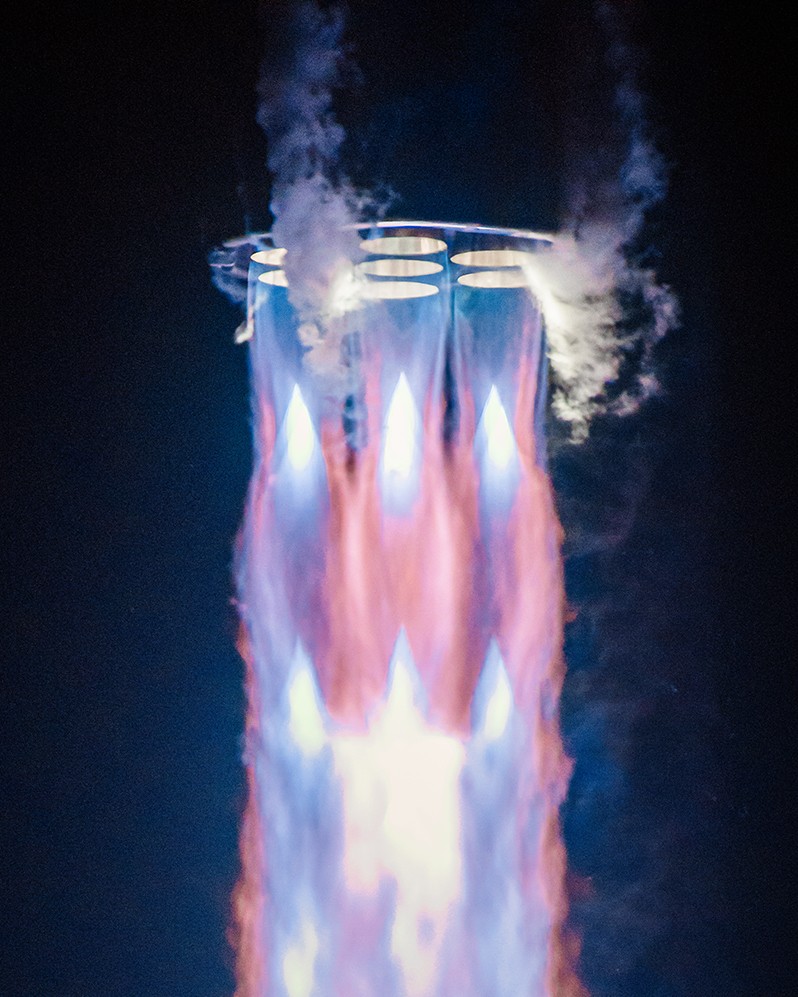Unlocking the Power of Hydrogen Peroxide: Advances in clean propulsion catalysis
Hydrogen peroxide (H2O2) is well known as a household disinfectant, but in its concentrated forms, it has a powerful second life as a clean and efficient propellant used in space applications. When decomposed, H2O2 breaks down into oxygen and water vapor, releasing a significant amount of heat. This simple reaction has been studied for decades, but it’s finding new relevance in the world of sustainable space propulsion.
Basics of decomposition
The hydrogen peroxide decomposition follows a straightforward chemical reaction:
2 H2O2 → 2 H2O + O2 - 196 kJ
This exothermic reaction produces high-pressure steam and oxygen ideal for propulsion systems while avoiding the harmful byproducts associated with hydrocarbon combustion. However, the hydrogen peroxide decomposition reaction is intrinsically slow and needs help to proceed rapidly and efficiently: that’s where catalysts come in.
 Catalysts matter
Catalysts matter
A catalyst provides the surface and chemical environment for hydrogen peroxide to decompose efficiently. Without one, the reaction is slow. Traditional catalysts for H2O2 decomposition have often relied on metals like silver or manganese oxides, but these materials are not so active and can degrade over time, especially under high heat or when exposed to concentrated peroxide solutions.
Beyond the catalytic material itself, the substrate supporting the catalyst plays an essential role. These substrates, often metallic or ceramic, provide the physical support structure that ensures a good dispersion of the catalyst and efficient and durable anchoring of the active catalyst layer. The choice of substrate also influences thermal conductivity, mechanical strength, and the overall surface area available for the reaction. A poorly chosen support can lead to thermal stress and premature failure.
Developing and selecting the optimal catalyst-support combinations is a challenging task that demands expertise in both material’s science and engineering. Achieving this optimal combination requires maximizing surface area while maintaining structural integrity and enabling optimal heat dissipation without sacrificing performance. Recent advancements have seen high surface area metallic substrates emerge as a leading solution, offering superior durability and catalytic efficiency.
New developments in catalyst science are addressing these issues by improving activity, durability, and resistance to catalyst coating loss. The latter two factors are especially critical as propulsion applications move toward higher performance and cleaner systems, driving the growing demand for more robust catalysts.
Key challenges in the field
Working with hydrogen peroxide is challenging — high concentration solutions are corrosive, unstable, and dangerous without the right handling protocols. On the hydrogen peroxide decomposition catalyst side, the challenges include:
- Thermal durability: Catalysts must remain active after repeated thermal cycling.
- Adhesion of catalyst coating: Catalysts must stay securely bonded to the substrate even after repeated thermal cycling.
- Ignition reliability: Especially in monopropellant systems, fast and consistent decomposition is critical.
The complexity involved to maximize these properties makes the design of a high-performance catalyst for H2O2decomposition a challenge for materials science and chemical engineering.

Innovation through materials
Recent innovations have pushed beyond traditional metal-based systems. Ceramic catalysts, nanostructured supports, and mixed-metal oxides are emerging as top candidates for next-generation decomposition catalysts. These materials can withstand higher temperatures and operate with minimal startup delay.
The integration of high surface area metallic substrates integration is one of the most significant advancements. These substrates provide an increased active surface area for catalytic reactions to occur, allowing more contact between the hydrogen peroxide and the active catalytic sites. Their high mechanical strength addresses the long-term stability challenges, even under the demanding thermal and chemical conditions found in propulsion environments.
Another approach involves structuring the catalyst surface to manage heat during the reaction or doping the catalyst with secondary elements to fine-tune its activity and stability. These innovations are helping make hydrogen peroxide a more practical option for propulsion systems in aerospace, defense, and even terrestrial applications like clean-energy backup systems.
A cleaner path forward
As the clean energy sector explores alternatives to fossil fuels, hydrogen peroxide is emerging as a reliable, green oxidizer. With no carbon emissions and a high-energy yield, it offers a compelling option for short-duration or high-impulse applications.
Through a combination of advanced catalyst materials and high-performance substrates, hydrogen peroxide propulsion is being reimagined as a forward-looking component of sustainable energy and transportation systems.
The future of clean propulsion may very well depend on our ability to master reactions like this one, which are simple in theory, but complex in practice. At the heart of that mastery is the catalyst: engineered, optimized, and ready to unlock the full potential of hydrogen peroxide.
Robin Hu is a Research Scientist and the R&D Manager at DCL International Inc., where he drives innovation in catalytic materials for clean energy and emission control. He holds a PhD in chemical engineering and has authored several publications and contributed on multiple patents related to advanced catalyst materials for emission reduction.
DCL International Inc. | www.dcl-inc.com
Author: Robin (Linjie) Hu, PhD







